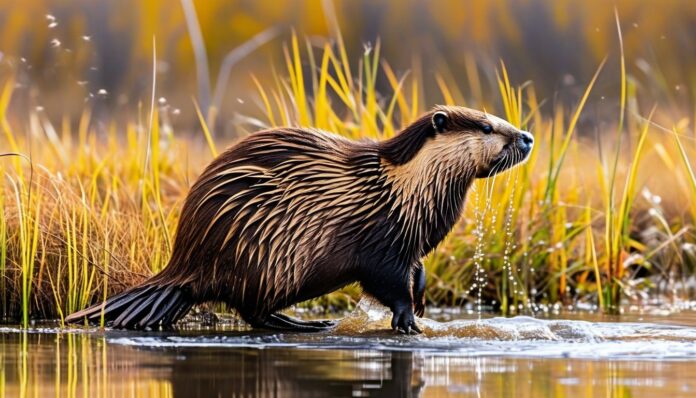Beavers are extraordinary animals that are unlike any other creatures on Earth. These mammals spend a significant amount of time in the water, build complex structures, and gnaw on trees with such skill that even professional lumberjacks might envy them.
Facts About Beavers:
- The family of these animals is not large. It includes only two species: the European beaver and the Canadian beaver.
- Beavers were once considered fish! At least, that’s what Catholic monks claimed for a long time. This was likely done intentionally so they could enjoy beaver meat during fasting periods. Since beavers spend most of their time underwater, they were classified as fish.
- The beaver is the largest rodent in Europe. In the world, it holds the second place of honor, with only the capybara, which inhabits South and Central America, being larger.
- In Eastern Europe, beavers were hunted specifically for their fur about 1,000 years ago. As a result, by the 20th century, these rodents were on the brink of extinction. Fortunately, their population has been restored.
- Hunting beavers in Russia was a practice that spanned many centuries, but not all hunters had the right to do so. Those who did were called “bobrovniki” (beaver hunters).
- Beavers’ winter food stores, made up of branches, can reach up to 70 cubic meters in volume for a single family.
- Scientists have observed that the shape of a beaver dam depends on the speed of the water flow: where the flow is slow, the dam is straight, and where it is fast, the dam is curved towards the flow.
- The beaver’s tail serves as a rudder, a temperature regulator, and an emotional indicator. If a beaver is angry, it slaps its tail.
- The natural predators of river beavers are wolves, brown bears, and foxes, but the greatest threat to their population is humans, who hunt beavers for their valuable fur and meat.
- To build their dams, beavers fell trees by gnawing at the base from all sides. A beaver can fell an aspen or willow with a diameter of 7 centimeters in five to ten minutes, while a tree with a diameter of up to half a meter can take a beaver an entire night.
- Beaver kits typically stay with their parents until they are at least two years old.
- Beavers have transparent eyelids, allowing them to swim underwater with their eyes closed while still being able to navigate their surroundings.
- Beavers meticulously process fallen trees—separating the branches, cutting the trunk into several pieces, and floating them to their lodge or dam.
- Beavers are strict vegetarians. Their primary diet consists of the bark and shoots of shoreline trees.
- An adult beaver can consume food in a single day that weighs 20% of its own body weight.
- Beavers mark their territory with a secretion called “castoreum,” produced by their musk glands. The scent of each beaver is unique, like human fingerprints.
- A typical beaver family occupies a territory of 2-3 square kilometers.
- These amazing animals are found on only two continents: Eurasia and North America.
- On small rivers and streams, beavers build dams to raise the water level and protect their lodges. Otherwise, their homes would end up on dry land, making them vulnerable to predators.
- The weight of an adult beaver can reach 25-30 kilograms, comparable to that of a seven- or eight-year-old child.
- The two existing species of beavers in the world cannot interbreed, despite their similar appearance.
- The claw on their second toe is split in two for more convenient grooming of their fur.
- By the beginning of winter, up to 50% of a beaver’s body fat is concentrated in its tail, whereas in the summer, it only holds 15%.
- The body length of an adult beaver can reach 100-130 centimeters, including the tail.
- Beavers can stay underwater for 10–15 minutes, covering distances of up to 500-750 meters during that time.
